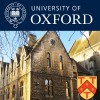मराठ्यांचे नजराणे
Gifts from Marathas
'Gift' is a powerful word in diplomacy. In history Gifts are a symbol of power and prestige; throughout the time it always has been a tool to honor or insult someone. We can assert that gifts have extraordinary political value. Some estimates can be made about the political, economic and social position of the giver and the recipient. It is interesting to study the reasons why gifts were given, which items are considered worthy, how the nature and value of gifts were changed according to the political position of the giver and the receiver.
At the various stages of the Maratha rule, one can see how the importance of this monarchy changed with the exchanges of gifts with other monarchs. The proposed research paperwill study how gifts to special reference to Marathas were circulated in 17th and 18th century South Asia? What techniques were used for this circulation? How diplomatic relations were closely linked to the circulation of gifts?How gifts worked as tool to get cultural and psychological legitimacy? We can see this circulation through various incidents, for example, Jaswant Singh who was in the service of Mughal came to Deccan in C.E. 1667. He gave a richly present, consisting of three horses, three Khasas, one thardar headdress and ten camels to Shivaji. In return, Shivaji gave one horse and some money to three emissaries. In 1667 Sambhaji when he visited prince Muazzam he stayed with Jaswant Singh who also received two horses, one pair of panchua and one than of cloths. Examples like these will help to understand the circulation of gifts and its various dynamics.
For this paper, along with secondary sources, some primary documents from Peshwa daftar, Rajasthan state archives and English factory records will be referred
परकीय संबंधामध्ये किंवा मुत्सद्दीगिरी मध्ये नजराणे शक्ती आणि प्रतिष्ठेचे प्रतीक आहेत. ऐतिहासिक काळापासून एखाद्याचा सन्मान करणे किंवा अपमान करण्यासाठी नजराण्याचा नेहमीच एक साधन म्हणून वापर झालेला दिसून येतो. इतिहासामध्ये नजराण्याला विलक्षण राजकीय मूल्य आहे. यावरून नजराणा देणारा आणि स्वीकारणार्याच्या राजकीय, आर्थिक आणि सामाजिक स्थितीबद्दल काही अंदाज बांधले जाऊ शकतात. नजराणे का दिले गेले, कोणत्या वस्तू नजराणे म्हणून देण्यायोग्य मानल्या गेल्या, देणार्यांच्या आणि स्वीकारणाऱ्याच्या राजकीय स्थितीनुसार नजराण्याचे स्वरूप आणि मूल्य कसे बदलले याचा अभ्यास करणे रोचक आहे.
मराठा राजवटीच्या वेगवेगळ्या टप्प्यावर नजराणे देणारे आणि स्वीकारणारे अश्या दोन्ही राजसत्तांचे महत्त्व कसे बदलले ते पाहता येणे शक्य आहे. प्रस्तावित संशोधनामध्ये १७ व्या आणि १८ व्या शतकात मराठ्यांच्या विशेष संदर्भात दक्षिण आशियामध्ये नजराण्यांची देवाणघेवाण कशी होत असे? या देवाणघेवाणीच्या व्यवहारात कोणते संकेत रूढ होते? नजराणे देणे, घेणे आणि मुत्सद्दीपणा यांचा काय संबंध होता? सांस्कृतिक आणि मानसिक वैधता मिळविण्यासाठी नजराण्यांचा वापर कसा झाला? या सर्व बाबींसंबंधीचा अभ्यास आपण विविध संदर्भसाधनांच्या साहाय्याने करू शकतो. उदाहरणार्थ, मुघलांच्या सेवेत असलेले जसवंत सिंह इ.स. १६६७ मध्ये दख्खनमध्ये आले. त्यांनी शिवाजीला तीन घोडे, तीन खास (वस्त्रविशेष), एक थारदार शिरस्त्राण आणि दहा उंट नजराणा म्हणून दिले. त्या बदल्यात शिवाजींनी तीन दूतांना एक घोडा आणि काही पैसे दिले. १६६७ मध्ये संभाजी जेव्हा राजपुत्र मुअज्जमला भेटले तेव्हा ते जसवंतसिंग यांच्याकडे राहिले. संभाजींना दोन घोडे, पाचुआची एक जोडी (वस्त्रविशेष), आणि काही कपडे देण्यात आले. यासारख्या उदाहरणामुळे नजराण्यांची देवाणघेवाण आणि त्यातील विविध बाबी समजण्यास मदत होईल.
या संशोधनासाठी दुय्यम साधनांसह पेशवे दफ्तर, राजस्थान राज्य अभिलेखागार व इंग्लिश फॅक्टरी रेकॉर्ड्स मधील नोंदी यांचा प्राथमिक संदर्भसाधने म्हणून वापर केला जाईल.




